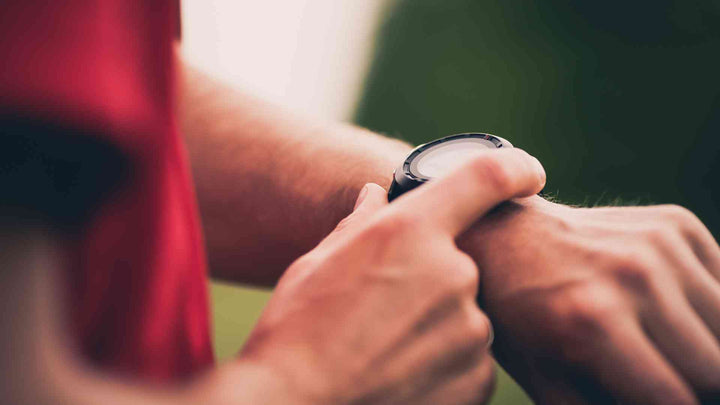

Whether you’ve just started your fitness journey or have been grinding for years, you would have heard of wearables. Once reserved for top-flight athletes, wearable technology is very much mainstream. Available to buy on the high street and worn by everyone from your grandma to a teenager. But what are actually are they and how do they fit into your fitness training? Here, we’re going to give you all the need-to-know info about wearable technology and how to use them to smash your fitness goals.
So how do wearables work?
Wearable technology essentially tracks different aspects of your biometrics. They’re worn on different parts of the body and contain sensors that pick up information from your body. This data is then fed back into an app or digital format where you can see the results for yourself. From heart rate to steps to fat or calories burned, each piece of wearable technology tracks different variables. So whatever your goal, there’s a wearable to help you track it.
In general, wearables fall into 3 main categories:
- Wrist wearables. From purpose-made fitness trackers to smart-watches which combine metrics with other phone-like features. These sit on your wrist like a watch and can collect data on your step count, pace and heart rate. Depending on the model you go for, these metrics can be combined to also make estimates on calories or time spent in a fat-burning phase.
- Chest wearables. A strap that you wear just below your chest. These are often the wearable of choice for runners or athletes as they have been claimed to offer more accurate heart rate data than wrist wearables.
- Smart clothing. This is still a developing technology when it comes to wearables, however, there have been some exciting innovations that are starting to bring smart clothing into the mainstream. Fabrics are peppered with sensors to collect data from throughout your body. Definitely, one to watch for the future.
How can wearables help you move towards your goals?
Whichever wearable you opt for, the insight you’ll get from the data can be super useful in tracking progress, your fitness levels and the quality of your recovery. Setting goals is all well and good but if you’re not tracking progress it’s tricky to know when to up the ante or even if you’ve achieved the result you’re looking for. Wearables help to close this gap of knowledge - giving you an accurate way to actually see the strides you’re making. Below are some tips on how to track different goals using a wearable.
See improvements in your cardiovascular performance
This all comes down to heart rate. When working through a tough workout, your heart rate will move through different levels of effort. Seeing improvements in your cardiovascular performance can be tracked by doing the same workout. Over time, you should see that your heart rate is at lower levels despite the hard work you’re putting in. This is a signifier that your cardiovascular system has increased its tolerance and doesn’t have to work as hard to go through the same workout.
Track your running progress
Chest straps are particularly useful for runners who cover long distances. Your heart rate data can help inform the amount of effort it takes to go on a run. From this baseline data, you can then plan runs with different intensities, using heart rate as the metric which determines how tough the run is.
Understanding your recovery
Most fitness watches or wrist straps also track your sleep and recovery. Your wearable may give you data on your ‘readiness’ to get back to training - giving you an indication of how hard you can push in your session. If you’re stringing workouts back to back or not getting enough sleep, it’s likely that your body is not ready for a super intense workout. Use this data to plan your sessions and back off from high-intensity movements which might cause injury.
The darker side of wearables
Much like any piece of tech, there are of course drawbacks to keep in mind. First off is the unhealthy obsession with numbers. Getting fixated on your steps and heart rate can take all of the fun out of fitness. Making it more of a chore than something you enjoy doing. This is something to be especially wary of if you’ve suffered or are suffering from an eating disorder - creating another area or metric to become obsessed with.
In addition, wearables somewhat pull you away from really tapping into how you feel. Often the body tells us the data we need. Getting up for a run or the gym is difficult when we haven’t recovered enough or how we’re breathing can give us an indication of how hard we’re working. Wearables tend to separate us from those natural signals.
However, as long as you have an awareness about both of these potential issues, your wearable shouldn’t pose a problem. Ultimately it should just heighten your awareness of your body and help to give you a more in-depth understanding of your progress and recovery.
Now you’ve got the pros and cons of wearables, are you ready to take the plunge? We’ve picked out some great sport watches and chest straps which are perfect to get started with wearables. Or if you want more tips on how to improve your fitness performance, take a look at our blog.


